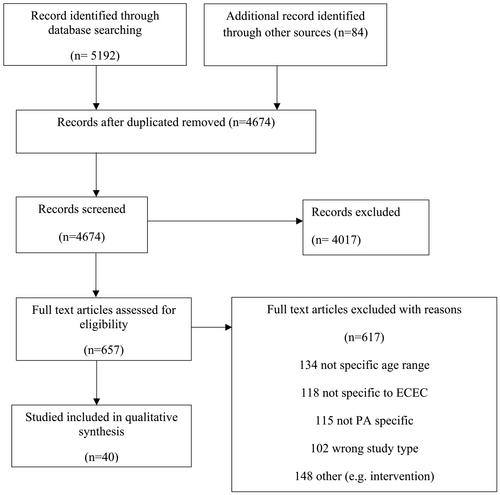An updated systematic review of correlates of children's physical activity and sedentary time in early childhood education services
Abstract
Background
Early childhood education services (ECE) continue to be a key setting to promote physical activity and limit sedentary behaviour. Thus, the aim of this study was to (1) provide an updated systematic review of correlates of physical activity and sedentary behaviour among children in ECE settings and (2) discuss changes in physical activity and sedentary behaviour correlates among children in ECEC settings over time.
Methods
A systematic search of eight databases identified 40 studies published between 2015 and 2023 that met the inclusion criteria. The variables were categorized into four domains (child, educator, physical environmental and organizational). Fifty-eight variables were identified.
Results
For data from 2015 to 2023, strong associations were identified in all domains (child, educator, physical environmental and organizational) for physical activity, yet no strong associations for sedentary behaviour were identified. Aggregated data (i.e., combining data from previous review and this review) showed strong associations with children's physical activity and age, motor coordination and sex (child), educator behaviour and presence (educator), presence and size of outdoor environments (physical environmental) and active opportunities and service quality (organizational). For sedentary behaviour, sex, outdoor environments and active opportunities were strongly associated in the combined data.
Conclusion
The correlates of physical activity and sedentary behaviour in ECE settings continue to be multi-dimensional and span different domains. Variables such as educator behaviours and intentionality, provision of active opportunities, use of outdoor space and service quality should be the key focus area for improving physical activity and sedentary behaviour levels of young children.


 求助内容:
求助内容: 应助结果提醒方式:
应助结果提醒方式:


